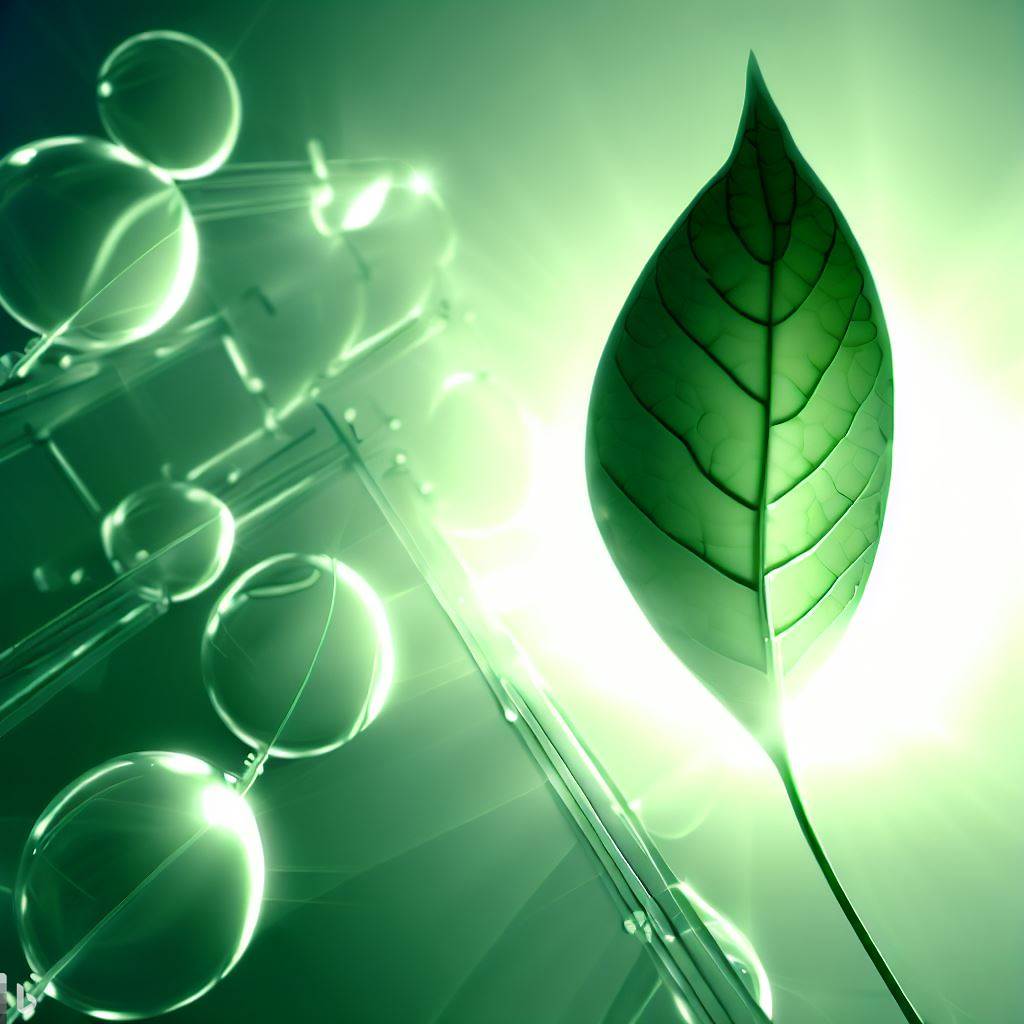Research discovers a more efficient way than photosynthesis to produce methane

A research group from the City University of Hong Kong has recently developed a stable artificial photocatalytic system that is more efficient than natural photosynthesis and which can therefore produce methane with a higher efficiency than natural one. The new system mimics a natural chloroplast to convert carbon dioxide in water into methane, a valuable fuel, using light very efficiently. This promising discovery could contribute to the goal of carbon neutrality.
Photosynthesis is the process by which chloroplasts in plants and some organisms use sunlight, water and carbon dioxide to create food or energy. In recent decades, many scientists have tried to develop artificial photosynthesis processes to transform carbon dioxide into zero-emission fuel.
Professor Ye Ruquan, an associate professor in the Department of Chemistry at CityU, one of the leaders of the joint study, explained: “However, it is difficult to convert carbon dioxide into water because many photosensitizers or catalysts degrade in water. Although man-made photocatalytic cycles have been shown to operate with higher intrinsic efficiency, low selectivity and stability in water for carbon dioxide reduction have hampered their practical applications.
In the latest study published in Nature Catalysis, the joint research team of CityU, University of Hong Kong (HKU), Jiangsu University and Shanghai Institute of Organic Chemistry of the Chinese Academy of Sciences has overcome these difficulties using a supramolecular assembly approach create an artificial photosynthetic system. It mimics the structure of a purple bacterium's light-harvesting chromatophores (i.e. cells that contain pigment), which are very efficient at transferring energy from the sun.
The core of the new artificial photosynthetic system is a highly stable artificial nanomicelle, a type of polymer that can self-assemble in water, with water-loving (hydrophilic) and hydrophobic ends. The hydrophilic head of the nanomicelle acts as a photosensitizer to absorb sunlight and its hydrophobic tail acts as an inducer for self-assembly.
When placed in water, the nanomicelles self-assemble due to intermolecular hydrogen bonding between the water molecules and the tails. The addition of a cobalt catalyst results in the production of photocatalytic hydrogen and the reduction of carbon dioxide, resulting in the production of hydrogen and methane.
Using advanced imaging techniques and ultrafast spectroscopy, the team unveiled the atomic characteristics of the innovative photosensitizer. They found that the special structure of the hydrophilic head of the nanomicelle, together with the hydrogen bonding between the water molecules and the tail of the nanomicelle, make it a stable and water-compatible artificial photosensitizer, solving the conventional problem of instability and incompatibility with the water of artificial photosynthesis. The electrostatic interaction between the photosensitizer and the cobalt catalyst and the strong light-gathering antenna effect of the nanomicelle enhanced the photocatalytic process. In the experiment, the team found that the rate of methane production was greater than 13,000 μmol h−1 g−1 , with a quantum yield of 5.6% over 24 hours. It has also achieved a solar to highly efficient fuel efficiency rate of 15%, surpassing natural photosynthesis.
More importantly, the new man-made photocatalytic system is economically feasible and sustainable, as it does not rely on expensive precious metals. “Hierarchical system self-assembly offers a promising bottom-up strategy for creating a precisely controlled, high-performance artificial photocatalytic system based on inexpensive and Earth-abundant elements, such as zinc-cobalt porphyrin complexes,” said Professor Ye.
Professor Ye also commented that he believes the latest discovery will benefit and inspire the rational design of future photocatalytic systems for carbon dioxide conversion and reduction using solar energy, contributing to the goal of carbon neutrality.
The study was supported by various funding sources, including the National Natural Science Foundation of China, the Guangdong Basic and Applied Basic Research Fund, the Shenzhen Science and Technology Program and the Hong Kong Research Grant Council.
This study paves the way for the non-biological production of methane, thus managing to obtain a faster process that does not require the development of a plant and then subjecting it to a chemical process. So the discovery paves the way for natural fuels made from the sun and atmospheric CO2. Greta's dream…

Thanks to our Telegram channel you can stay updated on the publication of new articles from Economic Scenarios.
The article Research discovers a more efficient way than photosynthesis to produce methane comes from Economic Scenarios .
This is a machine translation of a post published on Scenari Economici at the URL https://scenarieconomici.it/una-ricerca-scopre-un-modo-piu-efficiente-della-fotosintesi-per-produrre-metano/ on Sun, 13 Aug 2023 16:44:16 +0000.

